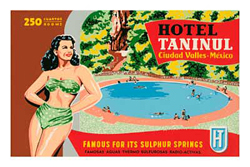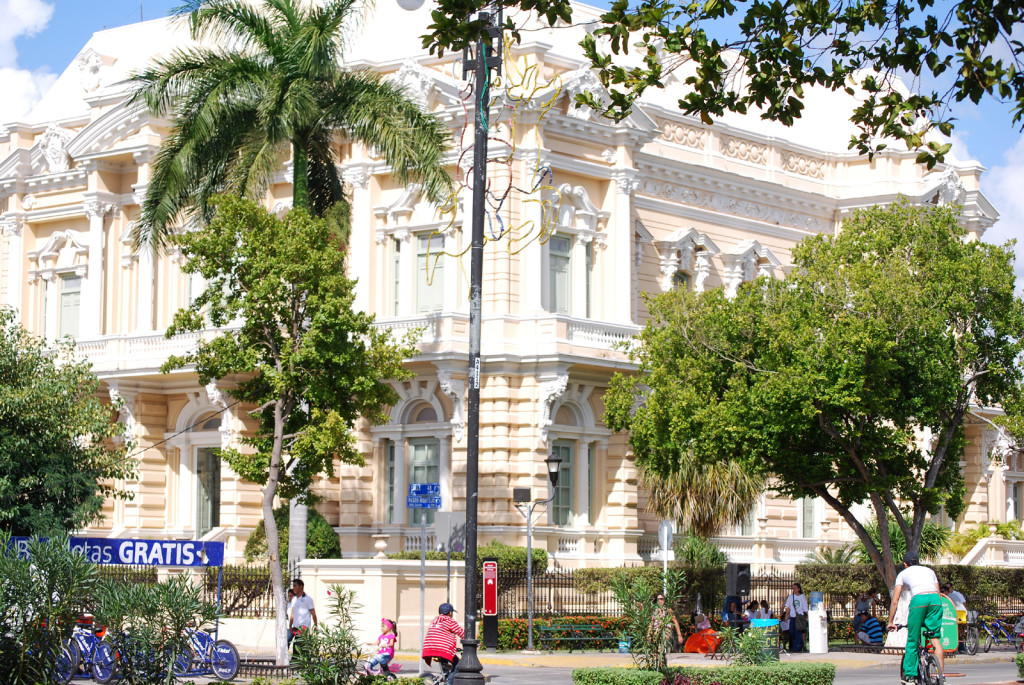 I came to Mérida for the jungle. I’d been there before, but not for eight or nine years. Friends had told me the city was changed, full of traffic, noisy, a place now better to skip than to savor. Don’t ruin your memory of it by going back, they said with the look of the informed traveler. It’s got a million people now and it shows.
I came to Mérida for the jungle. I’d been there before, but not for eight or nine years. Friends had told me the city was changed, full of traffic, noisy, a place now better to skip than to savor. Don’t ruin your memory of it by going back, they said with the look of the informed traveler. It’s got a million people now and it shows.
But I was on my own mission, and Mérida is the gateway to the ruined Mayan cities of the northern Yucatán. This capital of the state of the same name is indeed a big city, and it is not on the beach, which is about forty kilometers away.
My flight came in on a Friday evening in early December, descending through the dense humidity. Getting off the plane, the air was still quite warm, and the humidity was higher than the temperature. I had come from San Miguel de Allende, in the center of México, where the afternoons reach a dry 80º, after a morning that begins in the high thirties that time of year. The change felt welcome. My skin was awakening with a suddenly sassy attitude that said, “Hey, what’s this? Life is good!”
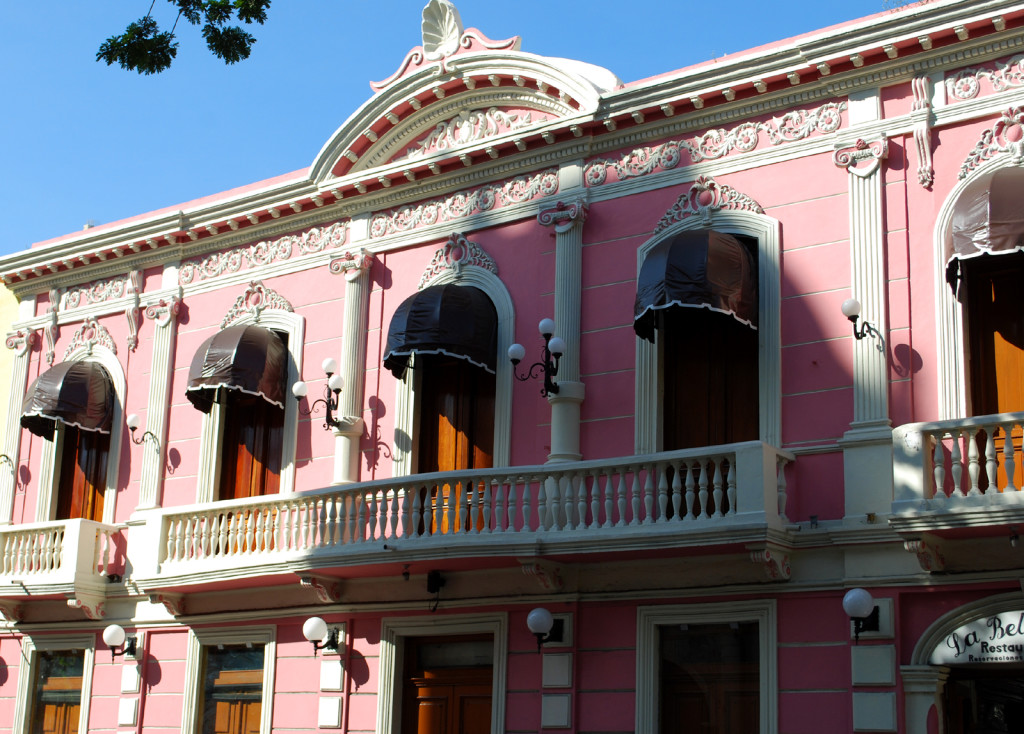 I settled in for the weekend, working on a mystery with elements of Indiana Jones. Somewhere, off in the tangle beyond the Mayan ruins of Ek Balam, directly above Valladolid, I had imagined a place I romantically called Mound 31. My detective hero and his friends would be trekking through the vegetation in search of an unexcavated pyramid tomb of the late Classic Period of Mayan civilization. On Monday, at the scene, I planned to be hacking my fictional path into the same undergrowth. This is no African jungle, with monkeys leaping from branch to branch 120 feet up. Here the treetops rarely reach 30 feet because the thin topsoil won’t support anything higher. I wanted to smell it, to taste it, to fight it back as it fought me. I wanted to glimpse the snakes in the trees eyeing my unprotected neck. I loved the concept, and the script appealed to the ten-year-old in me as I unpacked for a fun weekend in Mérida. Writing is hard work, and it’s best to begin with a foundation of relaxation.
I settled in for the weekend, working on a mystery with elements of Indiana Jones. Somewhere, off in the tangle beyond the Mayan ruins of Ek Balam, directly above Valladolid, I had imagined a place I romantically called Mound 31. My detective hero and his friends would be trekking through the vegetation in search of an unexcavated pyramid tomb of the late Classic Period of Mayan civilization. On Monday, at the scene, I planned to be hacking my fictional path into the same undergrowth. This is no African jungle, with monkeys leaping from branch to branch 120 feet up. Here the treetops rarely reach 30 feet because the thin topsoil won’t support anything higher. I wanted to smell it, to taste it, to fight it back as it fought me. I wanted to glimpse the snakes in the trees eyeing my unprotected neck. I loved the concept, and the script appealed to the ten-year-old in me as I unpacked for a fun weekend in Mérida. Writing is hard work, and it’s best to begin with a foundation of relaxation.
Make no mistake, the Mérida weekend is all about fun, even when the trip is a working one. I spent Saturday reorienting myself. The Plaza Grande is huge and inviting. Flanked by the oldest (1598) cathedral on mainland America, it was filled with covered stands selling the colorful embroidered cotton and sisal clothing of the region, toys and musical instruments. Food stands ringed the streets outside. The traffic in the central area is busy, as my friends had suggested, but not intimidating. One thing that had certainly not changed was the people of this region, who are, in my view, the most polite and friendly in all of México. I realize that they were formerly given to ritually ripping people’s hearts out. But times change, and the Mayans of today have seen the light. I suspect they grew tired of government interference with some of their traditional folkways, and are now experts in hospitality.
Sunday is the day for people to bloom. It begins with everyone headed to church in puffy jackets, since the temperature has plummeted overnight to 72º Fahrenheit. Moving about in perfect comfort in my shirtsleeves, people looked at me as if I were nude.
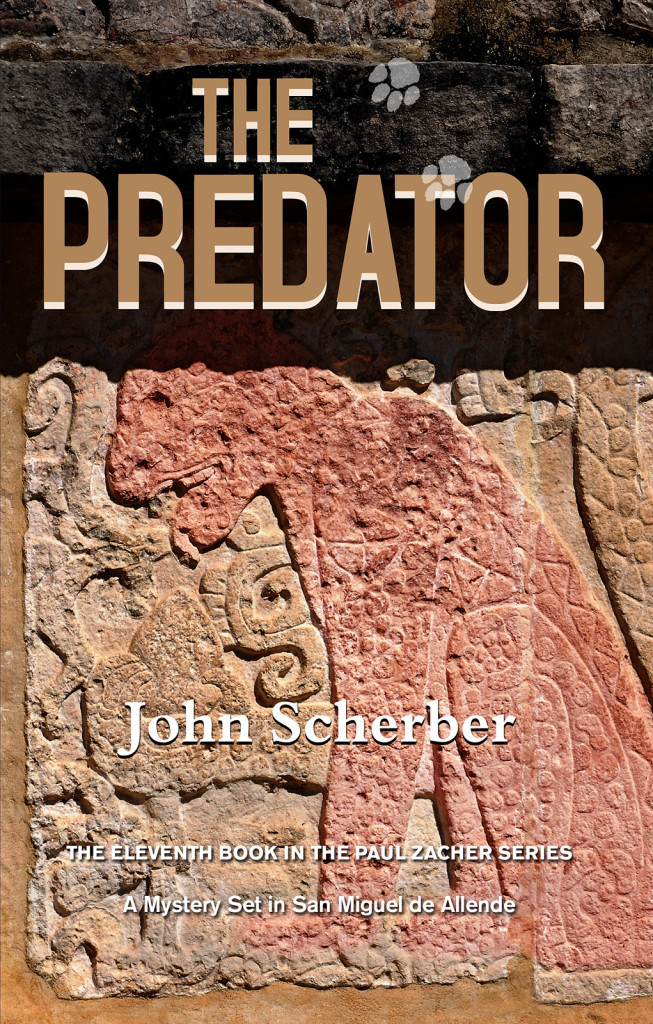 I headed out on foot for the Paseo Montejo, although the calesas, the white horse-drawn carriages beckoned to me. I can only describe the Paseo as a Victorian promenade boulevard, similar to the Summit Avenue I grew up with in Saint Paul. When sisal, a fiber product of the agave plant, a different variety of which also gives us tequila, exploded into commercial prominence for rope and clothing in the 1880s, the wealthy planters built their townhouses on this street. They looked to Europe for design ideas, particularly France, where the elaborate influence of Napoleon III’s Second Empire was still strong. Here their daughters were introduced into society, and their sons into business. Lacking mines and precious metals, this was the only period of great wealth the Yucatán ever had. Within seventy-five years it was over with the introduction of artificial fibers.
I headed out on foot for the Paseo Montejo, although the calesas, the white horse-drawn carriages beckoned to me. I can only describe the Paseo as a Victorian promenade boulevard, similar to the Summit Avenue I grew up with in Saint Paul. When sisal, a fiber product of the agave plant, a different variety of which also gives us tequila, exploded into commercial prominence for rope and clothing in the 1880s, the wealthy planters built their townhouses on this street. They looked to Europe for design ideas, particularly France, where the elaborate influence of Napoleon III’s Second Empire was still strong. Here their daughters were introduced into society, and their sons into business. Lacking mines and precious metals, this was the only period of great wealth the Yucatán ever had. Within seventy-five years it was over with the introduction of artificial fibers.
On this day, the Paseo’s outbound direction was closed to auto traffic. It streamed with families on foot and on bicycles. Stations on the avenue provided free loaner bikes. I walked all the way to the end. Many of the grand old mansions have been taken over by banks. You can argue with the suitability of having businesses along this great residential promenade, but at least they have the funds to maintain the houses until the tycoons return. The greatest of these mansions, the Palacio Cantón, is now the Anthropology and History Museum, which houses a stunning collection of artifacts from the surrounding jungle cities.
On my way back I paused for a leisurely lunch at Hennessey’s, an Irish pub that caters to the international community in Mérida. The next day I would be in Valladolid, my jumping off point to the jungle.
Moving up Calle 60, I stopped at the Plaza Santa Lucia, my favorite small square in Mérida. In the corner that abuts the arcaded shops and cafes, there stands a quarter-circle bandstand and dance floor. The rest of the space is full of chairs and tables under the trees. Families had brought their children and their lunch. The music had already begun. Cumbia, huaracha, son de Cuba, and others I couldn’t name filled the square with a compulsive rhythm. I could feel the influence of Havana and Cartagena across the water. Thirty or forty couples filled the platform, dressed to the nines and many of them ready for Dancing with the Stars. They were somehow immune to the heat, which by that time was intense. Still, my knees and elbows were bouncing to the band. I saw almost no other tourists there. Were they at the Plaza Grande three blocks away?
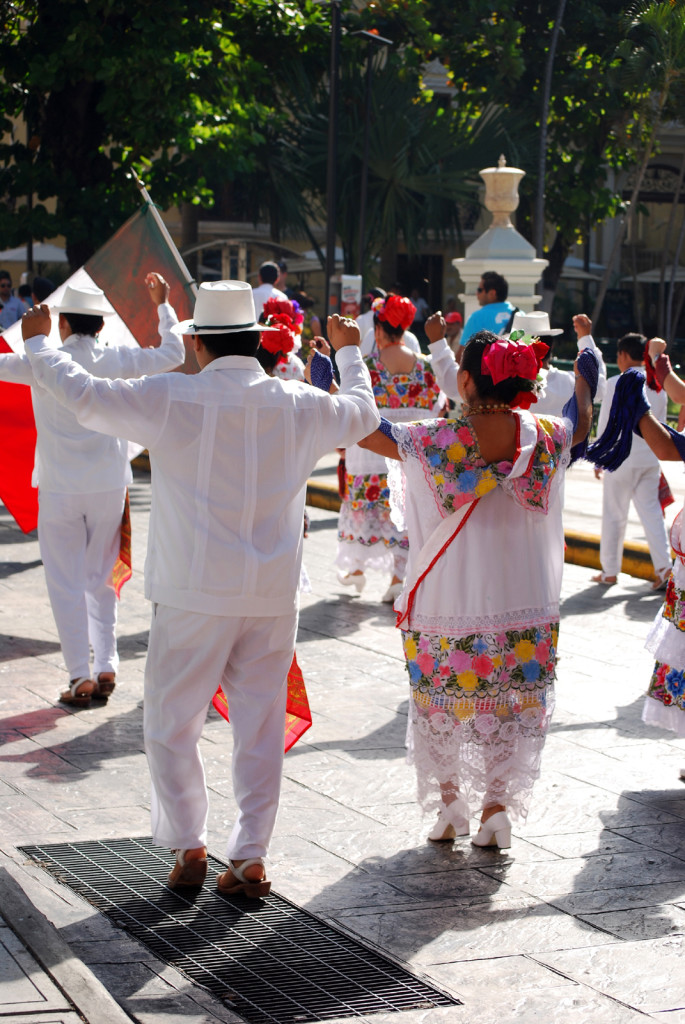 After a couple of hours I wandered up the street. By that time the area surrounding the main plaza was pedestrian only. Groups of dancers in the white, embroidered traditional outfits of the Yucatán were dancing in a parade around the plaza. Restaurants were setting up sidewalk tables on the Parque de la Madre, another small plaza between Santa Lucia and the Plaza Grande. Darkness fell as trios set up and began to play the romantic trova music of the Yucatán. I found a table near the old, unadorned, Jesuit church and settled in.
After a couple of hours I wandered up the street. By that time the area surrounding the main plaza was pedestrian only. Groups of dancers in the white, embroidered traditional outfits of the Yucatán were dancing in a parade around the plaza. Restaurants were setting up sidewalk tables on the Parque de la Madre, another small plaza between Santa Lucia and the Plaza Grande. Darkness fell as trios set up and began to play the romantic trova music of the Yucatán. I found a table near the old, unadorned, Jesuit church and settled in.
This was the Mérida I remembered, it was the city unwinding at nightfall, people coming out to party among friends and neighbors. Traffic was banished, life was good.
Tomorrow was going to be a workday in the jungle. An hour later I went back to my hotel room to look for my snake-proof shorts.
The book I went to the Yucatán to write is now out. CLICK THIS LINK to purchase ‘The Predator’
Visit John Scherber’s websute at: SAN MIGUEL BOOKS



